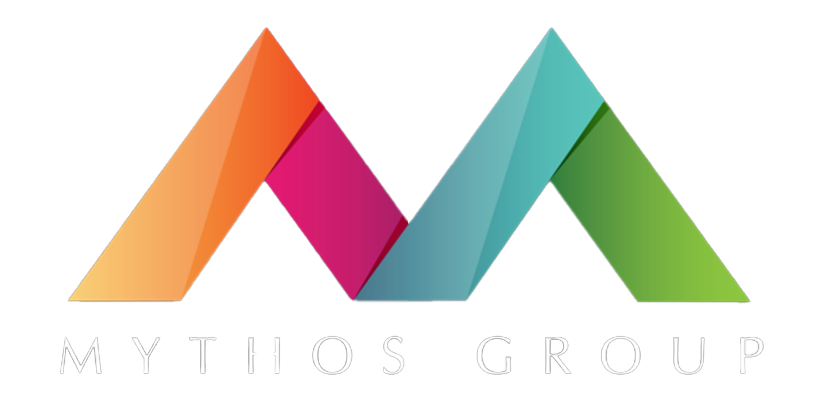Why OKRs Are Crucial To Team Success In 2024
Is your organization among the 90% of businesses that fail to reach their strategic goals? If so, it might be time to prioritize implementing objectives and key results (OKRs).
Businesses that fail to meet strategic goals often fall victim to one or more of the following:
- A lack of understanding around problems and challenges within the organization
- A focus on top-down communication
- Fragmented goals and departments
- Unclear responsibilities
- Over management
- Setting too many goals
- Poor company culture
Luckily, setting and leaning into OKRs can help address all of these challenges by creating a unified vision where everyone knows what’s expected.
What Are OKRs?
Objectives and key results (OKRs) are an effective goal-setting framework used in strategic planning. This tool qualitatively states what you want to improve and how you can measure the outcomes of your efforts to accomplish your goal.
The OKR concept was developed by Intel CEO Andy Grove in the 1970s and was built off a prior framework known as management by objectives (MBO). Grove took MBOs a step further by coupling them with key results, which he believed play a critical role in achieving objectives.
People often confuse OKRs with KPIs (key performance indicators), but the two concepts are different. OKRs refer to your overall objectives for your business and are often oriented around your vision and mission. KPIs are the smaller goals you need to achieve to get there, which means they help track your performance towards your OKRs.
OKRs are a critical piece of team success because they help employees understand the mission of the company, which helps to align both individual and team efforts with broader corporate targets.
3 Types Of OKRs
There are three main types of OKRS:
- Committed OKRs: These are goals that your team is committed to completely fulfilling. These goals are challenging but achievable and often have to do with improving daily operations.
- Aspirational OKRs: These “stretch” goals are designed to push your team’s limits to set a new standard for what is achievable.
- Learning OKRs: These OKRs are things you want to learn as you pursue outcome-oriented goals to gain new knowledge.
Examples Of OKRs
Small- and mid-sized businesses should aim to have between three and five OKRs at any given time. Examples of effective OKRs vary by industry. Here are a few to consider.
- Manufacturing: Increase sustainability by reducing factory energy consumption by 15% in the next year.
- Marketing: Increase leads generated by organic search traffic by 20% in the next year.
- SaaS: Increase monthly recurring revenue (MRR) by 10% in the next quarter.
- Health care: Increase inpatient bed occupancy rate from 75% to 85% by mid-year.
- Supply chain: Decrease order processing time from 36 hours to 24 hours by Q4.
One of the most well-known success stories involving OKRs comes from Google. An early backer of Google, John Doerr brought the concept of OKRs to the tech giant in 1999 when it had only 40 employees. In 2008, the year of Chrome’s rollout, Google established the following OKR:
- Objective: Develop the next-generation client platform for web applications
- Key result: Chrome reaches 20 million seven-day active users
While this OKR took many quarters to achieve, it had an enduring influence on Google’s future. Google now owns over 65% of the browser market share worldwide with an estimated 3.4 billion active monthly users.
Adobe is also an avid user of the OKR framework. When the company was faced with a personnel issue stemming from outdated performance reviews that caused annual spikes in resignations, it asked for internal feedback. The company then switched to an OKR system that focused on continuous improvement rather than yearly performance by implementing a check-in program.
Effective OKRs are essentially SMART goals for your organization, which means they need to be:
- Specific
- Measurable
- Achievable
- Relevant to your mission
- Time-bound
If your OKRs are too vague, your team will lack clarity on how to fulfill them, which means they likely won’t be achieved.
Benefits Of Setting OKRs
Implementing OKRs comes with a whole host of benefits. According to research, the three most common motivations for developing OKRs are to improve workplace transparency, prioritization, and overall strategy execution.
When you have clear OKRs, everyone knows what they’re expected to achieve. This then allows them the creativity and freedom to go about meeting their tasks in a way that utilizes their individual strengths.
Additional benefits of clear OKRs include:
- They encourage learning, innovation, and growth.
- They lead to more effective and informed business decisions.
- They increase productivity through focused goals.
- They are adaptable to the demand of today’s fast-paced business environment.
- They help employees feel more connected to corporate goals and like they’re a part of the organization’s success.
More than 70% of employees who are working with team OKRs say they understand their company’s mission, compared to just 50% of those working without OKRs. When employees feel connected to their company’s purpose, it leads to:
- Increased productivity
- Higher job satisfaction
- Higher-than-average industry profits
- Increased customer loyalty
- A clear competitive advantage in the job market
When goals are measured consistently, it also gives company leadership the opportunity to uncover pain points and bottlenecks that are preventing goal success. Leaders can then connect with affected teams to see what strategies can be implemented to combat these bottlenecks, such as more training, additional personnel, or more resources.
How To Develop OKRs
For OKRs to be effective, they need to be properly developed. Use these three steps to determine the best, most impactful OKRs for your teams.
1. Identify A Customer Need
It doesn’t make sense to create OKRs that don’t satisfy needs within your target market. Your OKRS need to align with customer pain points so employees can see how their work is solving a customer problem, which ultimately leads to greater team morale and productivity.
2. Employ A Problem-Solving Framework
Once a market need has been uncovered, work backwards to identify a specific goal, discuss how it can be achieved, and pinpoint how it will solve the customer’s problem. Break the goal down into four quarterly goals that can then be measured by KPIs. Be sure to solicit input from all departments and levels within your organization to correctly identify challenges and create a safe space for honest feedback.
3. Integrate Individual Aspirations With Team OKRs
Finally, create individual tasks that serve the team’s OKRs by capitalizing on each team member’s personal goals and aspirations. While weaknesses can be lifted with training and professional education, you’ll find greater success by building off of existing individual strengths. This helps connect the company’s goals with each individual’s career goals to create a shared purpose that drives both.
Ways To Effectively Track OKR Progress
Perhaps the most important step for aligning your organization with OKRs is creating an effective way to track your company, team, and individual progress. This enables you to make adjustments to changes in current market conditions or new insights when necessary.
A few tips for tracking and refining your OKRs include:
- Maintaining a regular schedule for tracking results (i.e. do you do this quarterly? Every four weeks?)
- Defining ownership of each OKR and KPI to add accountability
- Creating transparency around OKR progress (this can be done automatically with an OKR tracking or project management software)
- Assign percentage benchmarks for scoring key results
As you monitor OKR progress, discuss learnings and variables that may have changed. Get input from teams, and adjust your annual goals depending on market needs.
Strengthen Your Strategic Planning & Execution With Expert Guidance
Mythos Group has deep expertise to help your organization navigate an ever-changing business landscape. We offer corporate, business, and organizational strategy consulting services designed to help you achieve sustained purpose-driven and culture-based growth.
Contact us now to reconcile your short-term tactical moves with long-term strategic goals.







